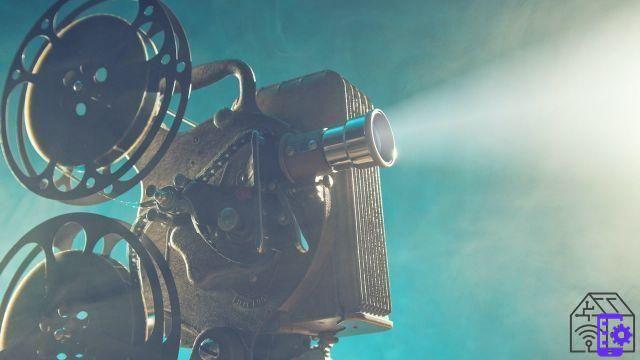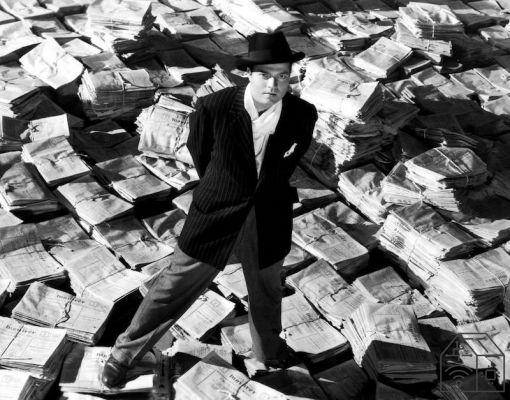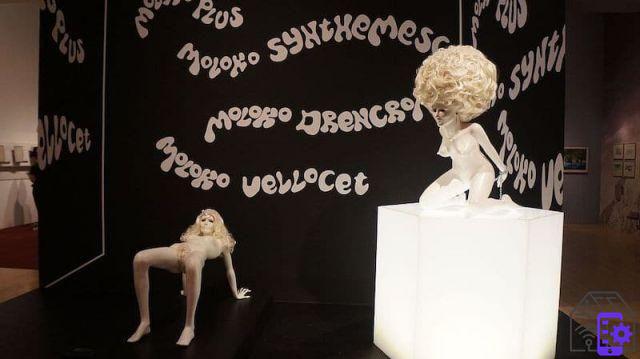
Today for the column How it has changed we will talk about cinema, and our usual approach will complicate our lives a little.
In fact, it is our habit to begin with the definition of the area we will deal with. Because? Because the definition usually helps us to clarify what we are talking about. But for cinema it is necessary to make a more complex reasoning, and to choose one of the three possible meanings of the term.
What is cinema: the cinema
What, then, is cinema? Well, with the word cinema we can mean three things. The first is short for cinematograph, which is the place where the films are publicly shown. And this aspect too deserves a separate discussion. Just think how much time has passed from the first silent films, with the accompaniment of a piano, to contemporary use, where digital copies of the films have supplanted the legendary pizzas. Not to mention the ever-growing ways of domestic use.
For the record, it must be said that several arthouse cinemas periodically re-propose some classics from the beginnings of cinema history enhanced by live music.

What is cinema: the history of cinematography
Second definition: cinema understood as the history of the products of the seventh art (by the way, do you all know what the other six are?). In this case, discovering how cinema has changed would mean tackling the analysis of films over time. The task is difficult, and we refer to the dense literature on the subject, including the many reference volumes with the files of all (yes, all) films ever made. We confess that our heart beats for the most institutional of these admirable ready-to-use manuals, Il Mereghetti.
Punctually, then, we play to draw up the rankings of the best film of all time and the best director. What are yours? We vote for Orson Welles' Fourth Estate and for Stanley Kubrick.
What is cinema: the cinematographic technique
We finally arrive at the third meaning of the word cinema, that is to the cinematographic technique. It is on this that we will pause briefly to find out how cinema has changed.
Who Invented Cinema?
The first question is immediately thorny: before discovering how cinema has changed, it is necessary to decide who invented it.
A premise: let's leave out (and we could talk about it for a long time) the so-called pre-cinema, that is, all those attempts to project moving images that precede May 20, 1891. We go, so to speak, from the ancient Chinese shadows to the magic lantern.
But let's go back to the inventor of cinema. Fixed conventionally with the Lumière brothers, precisely because the first screening in a cinema in front of the public is undoubtedly attributed to them.
Thomas Edison e il kinetoscopio
However, the Lumières themselves have never claimed this supremacy. Perhaps because they are aware that inventor Thomas Edison had shot about 1891 films with the kinethoscope between 1895 and 70.
Patented on August 24, 1891, the kinethoscope was a large case with an eyepiece at the top. The viewer looked into the eyepiece and, moving a crank, looked at the film mounted on spools.
But the first film even preceded the instrument's patent. It is about Dickons greeting, shown May 20, 1891. The film is so called because it shows William Kennedy Laurie Dickson greeting the viewer for a few moments. Dickson, Edison's aide, is none other than the inventor of the movie camera. And since that day we can say that we are in the company of the seventh art.
The Lumière, careful observers of the kinethoscope, will adopt a different system of perforating the films, in order not to risk being sued by Edison for plagiarism. And their public debut, on the aforementioned 28 December 1895, took place in front of 33 people. In reality, it is thepublic debut of cinema.
After 1900: narrative cinema
Until 1900, all films were projections of a single sequence lasting a few seconds.
One of the main evolutions of cinema is of the Brighton School: British filmmakers invent cutting and editing. And the first film produced with this technique, Grandma's lenses, dates back to 1900 and consists of two sequence shots. The film lasts one minute and twenty seconds.
How has cinema changed with the birth of that technical device? Radically: from there begins the narrative cinema. In 1902 Georges Méliès shot Voyage dans la lune, which was impossible for 13 minutes at that time.
In subsequent years the spectators discover the first great directors (Birth of a nation by the American Griffith is from 1915) and the first blockbusters (moreover Italian: Quo vadis? is from 1913 and Cabiria from 1914).
One of the first great masterpieces, still very modern today, is The Brat by Charlie Chaplin, from 1921.

The sound
In the XNUMXs, the first experiments with sound films began. The jazz singer, from 1927, is still a silent film but with sound inserts. While the following year it was the turn of the first fully sound film, Lights of New York.
The color
Another essential element to measure how cinema has changed is color.
The procedures for coloring the films are very different, and have followed one another and juxtaposed for decades. As early as 1894 some micro films were colored by hand. But in a nutshell we can say that the first public screening of a (three) color film took place in Paris in 1908.
 Film dictionary 2021
Film dictionary 2021
- Mereghetti, Paolo (Author)
Towards the present (and beyond)
Giving an account of how cinema has changed from the XNUMXs to today is an impossible task for the vastness of improvements not only technical but, so to speak, also narrative.
Cinema has become an industry, star actors, but at the same time there has never been a lack of research films and avant-gardes (think of Italian Neorealism and French Nouvelle Vague). Or directors capable of giving voice to social unease, like Ken Loach.
In conclusion: Like any art, cinema also advances among lovers of technical innovation and traditionalists, niche products and for the general public, rebellious geniuses and personalities more subservient to consolatory solutions.
Then, of course, there was the entry of digital, both in production and projection and distribution. The vision of the films is more and more realistic and the special effects more and more amazing.
And shortly thereafter, it seems that deepfake will be used to eliminate dubbing problems.
But we cinephiles do not regret: no technical devilry will ever be able to extinguish the magic of the seventh art. In the meantime, have you found out what the other six are?


























